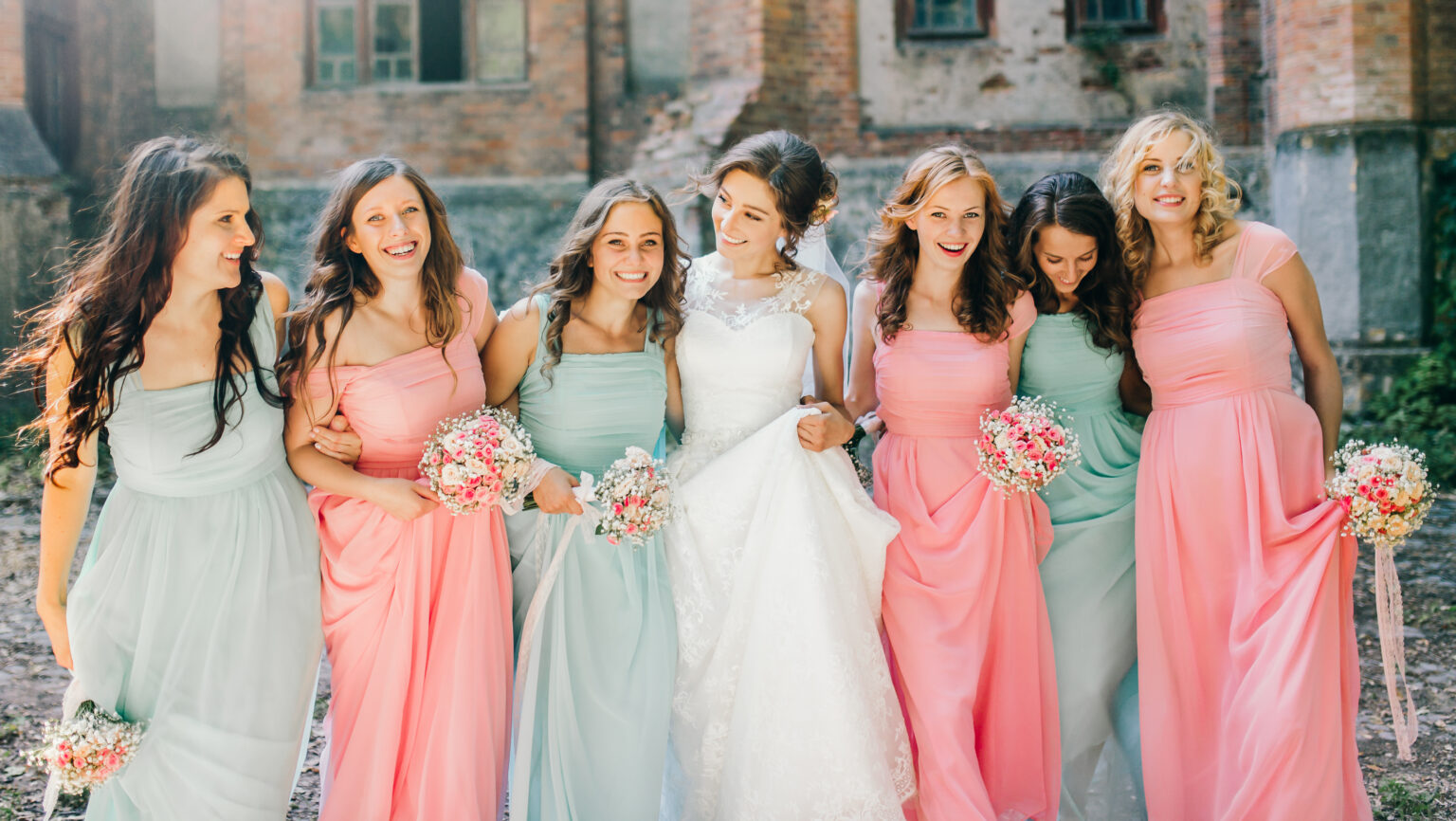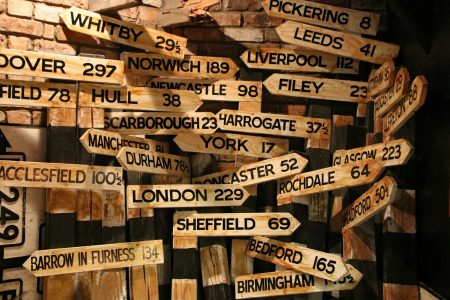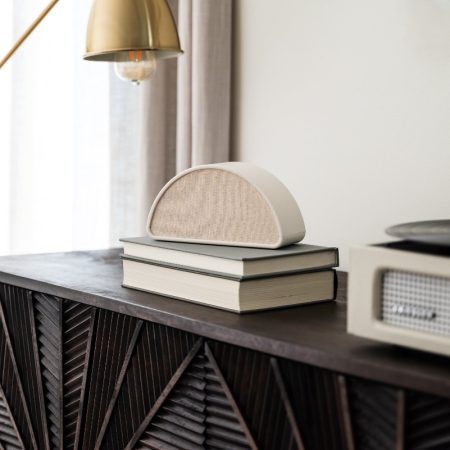Dyeing a wedding dress offers a unique opportunity to revitalise a cherished garment for further use or to personalise it for a special occasion. This transformation process allows one to infuse a touch of individuality and contemporary style into a traditional gown. Whether changing a pre-loved dress to fit a wedding theme or repurposing it for another event, careful consideration of the fabric, the dye, and the intended colour outcome is required.
When planning to dye a wedding dress, understanding the fabric composition is crucial as it influences the choice of dye and the application method. Natural fibres like silk and cotton respond differently to paint than synthetic materials like polyester or nylon. Selecting the appropriate dye type and testing it to ensure the desired shade is achievable is also essential. With the proper preparation and technique, a wedding dress can be evenly dyed, leading to a beautiful and satisfying result.
Moreover, it’s essential to protect the integrity of the dress during the dyeing process. Using a fixative can help secure the colour while incorporating additives like salt or vinegar can enhance the overall uniformity and vibrancy of the dye. Adhering to the optimal temperature and soaking time for the paint to set is imperative for a successful dyeing endeavour. Following these steps, a wedding dress can transition from its original state to a reinvented garment with a fresh colour that reflects personal preference and style.
Considering Fabric Types
Before attempting to dye a wedding dress, one must assess the fabric type, understand how different materials react to dye, and choose a shade that complements the fabric properties.
Identify Fabric Type
Wedding dresses can be made from various fabrics, each with distinct characteristics. Satin, for instance, is a popular choice for its glossy surface and smooth texture. Identifying whether a dress is made from natural fibres like cotton or silk, synthetic fibres like polyester, or a blend is crucial, as the dyeing process differs for each.
Understanding Fabric Reactions
Fabrics respond differently to dyes based on their composition. Delicate materials like silk might resist harsh chemicals, while synthetics may require specific dye types. For instance, natural fibres generally dye well with standard fabric dyes, but synthetics often need dispersive dyes.
- Natural Fabrics: Cotton and silk are usually compatible with standard fabric dyes.
- Synthetic Fabrics: Polyester nylon – may require dispersed pigments at high temperatures.
- Blended Fabrics: A mix of natural and synthetic – -dye choices should be based on the dominant fibre.
Selecting the Appropriate Dye
Choosing the suitable dye for a fabric type ensures the best result and longevity of colour. Satin made from silk will need an acid dye, whereas synthetic satin requires a paint formulated for synthetics. One should always consider the fibre content for dye selection to prevent damage and ensure an even application of colour.
| Fabric Type | Suggested Dye Type |
|---|---|
| Silk Satin | Acid dye |
| Synthetic | Disperse dye |
| Blends | Varies (test swatch) |
When dyeing a wedding dress, one can achieve a successful outcome by carefully considering the fabric type, its reaction to dye, and selecting the appropriate shade.
Pre-Dyeing Preparations
Before attempting to dye a wedding dress, one must carefully ensure a successful colour change. These preparations are crucial to prevent any damage to the fabric and to achieve an even dyeing result.
Performing a Pre-Wash
One should start by washing the dress to remove any impurities affecting dye uptake. It’s essential to check the garment’s label; if the dress is ‘dry clean only,’ a professional should do the pre-wash. For dresses that can be washed, one must use warm, soapy water. Rubber gloves are recommended to protect the hands. After washing, the clothing should be thoroughly rinsed and left to dry completely.
Testing Dye on a Swatch
Before dyeing the entire dress, testing the dye on a small fabric swatch is prudent. This is particularly important for DIY dyeing projects. To ensure colour accuracy, the swatch should be made of the same material as the dress or an inconspicuous area. Prepare a small amount of dye in a bucket per the dye’s instructions and submerge the swatch. Once the desired colour is reached, rinse and dry the swatch to assess the final result.
Preparing the Dyeing Area
The area must be well-prepared to prevent spillovers or stains during the dyeing process. One should cover the surface with a plastic sheet or old newspapers. Ensure that the bucket or basin used for the dye bath is clean and large enough to allow the dress to move freely. Gather all materials, including the dye, a stirring instrument, and rubber gloves, to prevent interruptions during the dyeing process.
Mixing the Dye
Preparing the dye correctly is crucial to achieving an even and vibrant colour in a wedding dress. This section will guide you through selecting the appropriate colouring based on the fabric, creating the dye bath, and using fixatives to set the colour.
Choosing the Right Dye
Different types of dyes are suited for various fabric materials. Rit paint works well for multiple fabrics and is versatile for home-dyeing projects. However, acid dyes like polyester may be more effective for synthetic materials. Natural fibres like silk and wool respond best to Procion dye, which is known for its vibrant colours and longevity.
- For cotton, linen, and viscose, Procion dye is recommended.
- Acid dye is a suitable choice for silk, wool, and nylon.
- For a fabric blend or an unknown material, Rit dye can be a universal option.
Creating the Dye Bath
The water temperature is critical when mixing your dye bath:
- Hot water is typically required for Rit and Procion dyes to help the colour dissolve and adhere to the fabric.
- Acid dyes often require piping hot water to ensure the colour sets effectively.
Stir constantly to ensure the dye is evenly distributed. Follow these steps for a proper dye bath:
- Fill the container with the correct water temperature (usually as hot as you can get it unless the specific dye instructs otherwise).
- Gradually add the dye to the water, stirring thoroughly to prevent clumps and ensure even colour.
- Test the dye bath with a fabric swatch to ensure the desired colour before proceeding with the dress.
Using Fixatives
A fixative, also known as a mordant, helps to set the fabric dye, reducing colour bleeding and fading. The use of a fixative will depend on the paint and fabric type.
- For Procion dye, a soda ash fixative is typically mixed into cold water separate from the dye bath to set the colours post-dyeing.
- With acid dyes, the fixative process often involves adding an acid-like vinegar to the dye bath.
- A fixative can be applied after the dyeing process to enhance Rit dye’s colour longevity.
To secure the dye in the fabric, the fabric should be submerged in the fixative solution for a specific time, following the time guidelines provided with the dye instructions.
Dye Application Process
When dyeing a wedding dress, meticulous preparation and execution ensure that the garment absorbs the dye evenly and achieves the desired colour. Following this process carefully can transform a wedding dress into a custom-coloured garment with professional-looking results.
Wetting the Garment
Before introducing any dye, the wedding dress needs to be evenly wet. This is critical to allow the fabric to soak up the colour uniformly. The garment should be submerged in a sink or basin filled with warm water and a small amount of mild detergent. The solution helps to remove any finishes that might block the dye. The dress should be gently agitated to ensure thorough saturation.
Dyeing the Wedding Dress
With the gown uniformly wetted, the dyeing process can begin. The wedding dress should be immersed in the dye bath and prepared according to the dye manufacturer’s instructions, ensuring the colour matches the desired shade. Consistent stirring of the fabric within the dye is fundamental to prevent splotches and achieve an even tone—stir, stir, stir is the mantra to follow. For an ombre or dip-dye effect, only a portion of the dress is submerged in the dye bath, creating a striking contrast.
Rinsing and Washing after Dyeing
Once the wedding dress reaches the target colour, it requires careful rinsing. The garment should be rinsed under cold water until the runoff becomes clear, indicating that the excess dye has been removed. Subsequently, the gown should undergo a final wash with a mild detergent in warm water to remove any lingering dye residue. Handling the garment gently during this stage is essential to maintaining its form and detailing.
Aftercare and Results
Aftercare is crucial to ensure that the dye on a wedding dress sets appropriately and the results are even and lasting. The dress should be consistently coloured and maintain that quality as it airs dry.
Setting the Dye
After the dyeing process, it is essential to set the dye to prevent colour bleeding and to ensure the colour stays vibrant. One can do this by using a dye fixative following the instructions on the product. Carefully handling the dress while the dye sets is essential; they must avoid squeezing or wringing the fabric, which can lead to uneven colour distribution. Allow the clothing to soak in the fixative for the recommended amount of time, which will help lock in the colour.
Drying and Finishing Touches
Once the dye is set, one should air dry the dress to preserve the integrity of the colour. Hang the clothing to dry in a well-ventilated area away from direct sunlight, which can cause the colour to fade. They should ensure the dress is completely dry before storing or wearing it. Ironing or steaming may be necessary to remove any wrinkles. However, they must use the appropriate heat setting for the fabric to avoid heat damage. A perfect drying process results in a dress that looks amazing and is ready for prolonged use or storage.
Troubleshooting Common Issues
While dyeing a wedding dress can refresh its look, one might encounter specific issues such as dye bleeding and uneven colour distribution. Detailed below are solutions to these common concerns using appropriate techniques and additives.
Preventing Dye Bleeding
Pre-Wash: Ensure the wedding dress is cleaned with warm, soapy water before dyeing to remove any finishes that may affect dye uptake.
Setting the Dye: Post-dyeing, using salt or vinegar as a fixative can help set the colour and prevent dye bleeding. The specific method may vary based on fabric type, but a general process is as follows:
- For Cotton, Linen or Rayon:
- After dyeing, prepare a fixative solution of ½ cup of salt dissolved in 8 cups of water.
- Submerge the dress in this solution for 45-60 minutes.
- For Silk or Wool:
- Use a solution of ½ cup of vinegar mixed with 8 cups of water.
- Soak the dress for 30-45 minutes.
Always check the dye’s label for specific fixative recommendations.
Addressing Uneven Color
Cold Water Wash: Start by gently washing the dress in cold water with a mild detergent to even out minor colour discrepancies.
Removing Excess Dye: If some areas are darker than desired:
- Create a mixture of a bleach solution, following the label instructions carefully.
- Dab it on the overly dark areas with precision.
- Rinse thoroughly.
A fabric dye remover might be necessary to lighten larger sections or more serious colour unevenness. Follow the package instructions to avoid damaging the fabric.
Care and attention in these steps can ensure a consistent and vibrant colour for your wedding dress.
Safety and Environmental Considerations
When dyeing a wedding dress, safety for oneself and the environment takes precedence. Addressing these considerations ensures a risk-free experience and minimises negative ecological impacts.
Protecting Your Skin and Surroundings
One must be vigilant when handling dyes, as skin irritation or disaster can ensue if spills occur. It’s crucial to wear protective gloves and safety goggles to shield one’s skin and eyes from the dye. Moreover, using plastic sheets or old newspapers can protect surfaces from stains. Achieving this can involve local dress dyers who are experienced in such tasks and can mitigate the risks of personal handling.
- Personal Protection
- Wear protective clothing such as gloves, aprons, and goggles.
- Make sure the room is well-ventilated.
- Surroundings Protection
- Cover the working area with plastic or newspapers.
- Keep a spill kit containing paper towels and a bucket of clean water handy for immediate cleanup.
Disposal of Dye Materials
Properly disposing of dye materials is essential to reducing environmental harm. The rinse water and leftover dye can contain chemicals that might be toxic to marine life if introduced to waterways. Ensure that any waste is disposed of in accordance with local regulations. Contacting local waste management services can provide the necessary disposal protocols.
- Dye Disposal Steps
- Neutralise the dye bath by following the instructions on the dye package.
- Dispose of liquids via hazardous waste facilities, not down the sink.
- Material Disposal
- Dispose of solid materials (e.g., stained fabric or paper towels) as per local waste disposal guidelines.
- If you need more clarification, consult with local environmental agencies.
Alternative Dyeing Methods
When one aims to transform their wedding dress, they can do a personal DIY project or utilise professional dyeing services. Each approach offers unique advantages and caters to different levels of expertise and desired outcomes.
DIY Residential Dyeing
DIY residential dyeing allows for a hands-on experience, giving individuals complete control over the dyeing process. First, one must gather all necessary supplies, including fabric dye, a large container or stainless steel sink, and a stirring implement. When dyeing a wedding dress, it’s essential to use a scrap piece of fabric to test the dye beforehand, ensuring the colour is as desired.
- Supplies Needed: Fabric dye
- A large container or stainless steel sink
- Protective gloves
- Stirring spoon or stick
One should follow a detailed dress dyeing tutorial for specific steps, paying close attention to the fabric type and the dye’s instructions. The process typically involves pre-washing the dress, preparing the dye bath with hot water, and immersing the dress, ensuring even coverage. After dyeing, the clothing must be rinsed thoroughly and dried according to the fabric care instructions.
Professional Dyeing Services
Professional dyeing services offer a stress-free alternative for those less inclined towards a DIY project or possessing a dress with intricate details or delicate fabrics. Local dress dyers provide expertise in handling various materials and complex designs, ensuring a professional finish without risking damage.
- Advantages of Professional Services: Expert handling of delicate fabrics
- Precise colour matching
- Stress-free experience
Professionals typically possess advanced equipment and can perform colour correction if necessary. They also conduct fabric tests with a scrap piece to ensure the chosen dye works harmoniously with the dress material. Most local dress dyers offer a consultation to discuss one’s vision and concerns before proceeding with the dyeing method.
Both methods provide the opportunity to breathe new life into a wedding dress, whether one leans towards the satisfaction of a personal project or the assurance of a professional service.
Creative Possibilities
When considering dyeing a wedding dress, the creative possibilities are abundant. This provides a chance to personalise a once-in-a-lifetime gown with a unique palette and dyeing techniques.
Exploring Colour Options
Black:
- High Contrast: For those seeking a dramatic transformation, dyeing a wedding dress black offers a striking alternative to traditional white.
- Sophisticated Elegance: Black can add a touch of sophistication, making the dress suitable for other formal occasions.
Gunmetal-Pewter Colour:
- Modern Twist: Incorporating shades of gunmetal or pewter infuses a modern edge into the bridal attire.
- Metallic Sheen: These shades can enhance the shimmering effect if the dress contains metallic threads.
Customising with Techniques
Ombre Dyeing:
- Gradual Transition: To create a soft gradient, one can apply dye in progressively lighter shades towards the top of the dress.
Paint-Dyeing:
- Controlled Application: Using a paintbrush allows for precise application of dye, making it ideal for adding detailed patterns or colour-blocking.
Attention to detail is critical in every technique to ensure an even distribution of colour and a professional-looking finish. Whether opting for bold black or the subtlety of gunmetal pewter, dyeing allows for a transformation that can match the wearer’s vision and style.
Frequently Asked Questions
This section will find brief answers to common enquiries about the process, cost, and considerations of dyeing a wedding dress.
What is the best method for dyeing a wedding dress at home?
For those attempting to dye a wedding dress at home, the best method usually involves:
- Using a fibre-specific dye.
- Cleaning the clothing beforehand.
- Even soaking it.
- A large basin or bathtub is used for dye submersion.
Constant stirring is critical to achieving an even colour.
How much should one expect to pay for professional wedding dress dyeing services?
The cost for professional wedding dress dyeing services typically ranges from £100 to over £500. Prices vary based on the fabric, dress complexity, and the desired shade.
What are the steps involved in dyeing a wedding dress black?
To dye a wedding dress black, one must choose the appropriate dye for the fabric, pre-wash the dress to remove finishes, prepare a dye bath, submerge the dress evenly, and continually stir for an even colour development. Finally, rinse thoroughly and dry away from direct sunlight.
Where can I find a reputable wedding dress dyeing service in the UK?
Reputable wedding dress dyeing services in the UK can be found by seeking recommendations from wedding planners, at bridal boutiques, online wedding forums, or by researching customer reviews of local professional dyeing services.
Is it possible to dye a wedding dress for a prom or other events?
One can repurpose a wedding dress for proms or other events by dyeing it. It provides a unique and personalised garment appropriate for various special occasions.
Are there any special considerations for dip dyeing a wedding dress?
When dip dyeing a wedding dress, it is essential to consider the type of fabric, as natural fibres take dye better than synthetics. Additionally, one should test the paint on a small, discreet section of the dress and use a gradual dipping technique to achieve an ombre effect. Protecting the undyed parts of the dress from colour bleed is essential.







